Buenos Aires
4 January, 2008, 12:43 am in "Argentina"
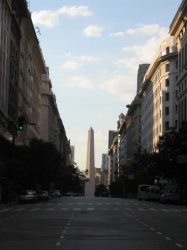 New Years Eve was surprisingly laid back considering we were in Buenos Aires, the city that never sleeps. In fact, most people were probably eating dinner at midnight when we expected to ring the new year in. We heard there were fireworks in plaza by the obelisk but when we showed up it turned out not to be a formal display but rather a place where people gathered to set off fireworks they bought. There is a certain charm to that but it is a bit nerve racking to see children shooting each other with roman candles and bottle rockets that would be considered illegal in many places in the US. I did, however, like the hot air balloon/lanterns powered by a flame that people set off to float into the sky.
New Years Eve was surprisingly laid back considering we were in Buenos Aires, the city that never sleeps. In fact, most people were probably eating dinner at midnight when we expected to ring the new year in. We heard there were fireworks in plaza by the obelisk but when we showed up it turned out not to be a formal display but rather a place where people gathered to set off fireworks they bought. There is a certain charm to that but it is a bit nerve racking to see children shooting each other with roman candles and bottle rockets that would be considered illegal in many places in the US. I did, however, like the hot air balloon/lanterns powered by a flame that people set off to float into the sky.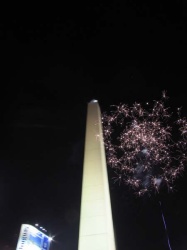
New Years Day was slow. Finally in the evening, some cafes opened up so we were able to get some pizza.
By the 2nd, the city was up and running again (or rather lethargically crawling due to the heat and the fact that most residents leave the blisteringly hot city for places like Patagonia leaving BA to naive tourists who are wondering why all the museums are closed. BA is a big modern city but also full of large buildings from the 1800s and early 1900s, a golden age of sorts where a lot of money and immigrants poured into the country.
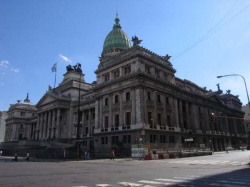
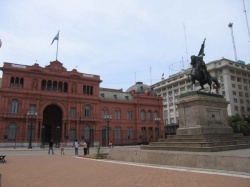
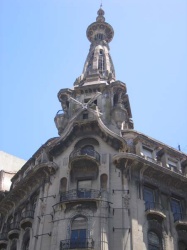
The center has shiny shopping centers, restaurants and theatres. It is like New York City but with wider streets. Corrientes Avenue is even lined with theatres like Broadway. There seems to be a feeling of prosperity. It is a place meant for spending money, whether you like it or not ... very bad for budget travelers. There are lots of green areas, monuments, open plazas and pedestrian streets full of buskers. There are murals and lots of cool graffiti art.
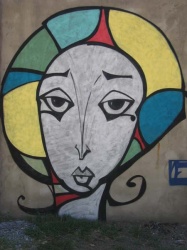
It is a sophisticated place with lots of bookstores and museums. Rowshan pointed to islamic tiles in one of the metro stations.
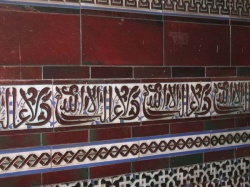
The center is a bit too much like the US for me: devoted to shopping (and with lots of McDonald's: McCafe, Kosher McDonald's as well as the standard one). San Telmo is a bit more my speed with art galleries, quirky antique shops, and cafes.
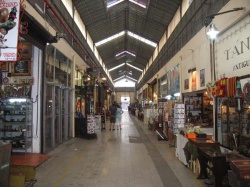
At one point it was an artist neighborhood but judging by the number of buildings for sale, it has out priced the artists.
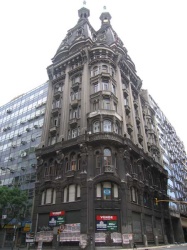
We wandered through what was once a central market but now had more handcrafts and antiques than food. Across from it was a supermarket. A bit beyond San Telmo is La Boca. That is where we went today. La Boca is probably where the artists who couldn't afford to live in San Telmo anymore fled to. I had heard it is a rough neighborhood but this wasn't too apparent during the day. Getting off the bus in La Boca was like suddenly stepping into a carnival in full swing. The buildings are painted in bright colors (traditionally the colors were leftovers from painting ships).
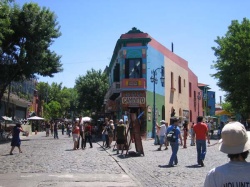
The streets are full of art, cafes featuring tango music and dancers, and lots of tourists. Besides the colors, I really liked the hand painted signs in La Boca (they also have them in San Telmo).
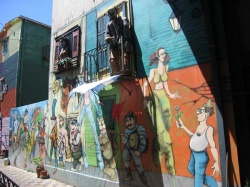
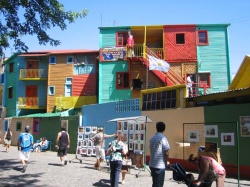
They are ornate and flowery and resemble 19th century carnival signs. They advertise everything: restaurants, museums, stores, and sites. I would have thought sign painting was a lost art due to neon, lit up plastic box signs and large print banners.
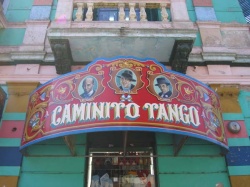
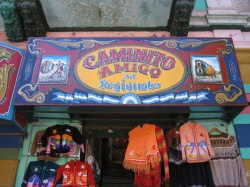
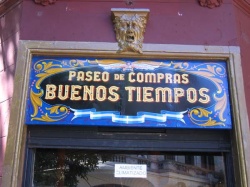
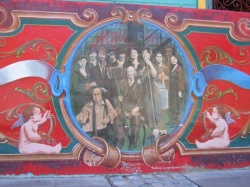
However, this is an art which is alive and well in Buenos Aires. I thought at first there must just be one artist but I saw numerous signatures. There were also lots of brightly painted paper-mache looking sculptures of people that added to the carnival atmosphere.
But La Boca is probably most famous for the soccer team, Boca Juniors. We walked by the stadium, stores devoted to fans, murals devoted to the team as well as numerous sculptures and cutout photo boards (the ones where you stick your head through the face hole so it looks like you are part of the scene) featuring Maradona.
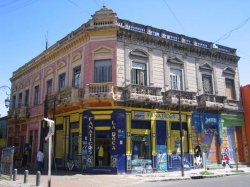
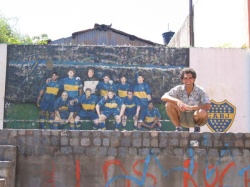
Comments
- Comments
Powered by My Blog 1.69. Copyright 2003-2006 FuzzyMonkey.net.
Created by the scripting wizards at FuzzyMonkey.net..
(Code modified by Rowshan Dowlatabadi)
Created by the scripting wizards at FuzzyMonkey.net..
(Code modified by Rowshan Dowlatabadi)

